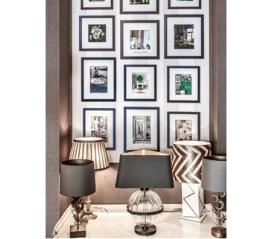How is the Ambience Lighting Achieved?
In general term, ambiance lighting is a background lighting. There is no purpose for providing a sufficient level of illumination for any functional area within the space, such as a work desk.
The ambiance is responsible for lighting, comfort, lightness and dimness, and affects all users in the overall decor. It also assumes responsibility for the visual fatigue experienced by users in the long run, since they partially or wholly address the ratios of the light levels to each other. The degree to which ambiance lighting contributes to total lighting in a given area or area is usually based on the types of functions on the site and the dimensions of the function areas. There must be continuity if it is planned for a large area or region.
Spatial and psychological factors should be considered in the design process of the ambiance illumination.
Spatial factorscan define the place and create sense of well-being in space users. For example, in a hotel lobby it should be of absolute importance. In addition, an aesthetic order and rhythm that suit and / or complement architecture can be created and visual attraction can be created with the effect of light. Of course, in all these plans, visual comfort is a criteria that should not be forgotten.
The ambiance lighting can be provided with luminaires which is mounted to walls, floors. In indoor applications, mounted products are usually applied as recessed, semi-recessed, plastered or pendant.
Apart from this general approach and use, ambience lighting is used for different purposes;
--In some cases, functional lighting or accent lighting can be done with only ambience lighting. Consider, for example, the entrance or transit lobby of an auditorium. Here you can plan a functional lighting that will allow you to identify faces with pendant uplight products and accent lighting with sconces to be used on the sides of the auditorium entrance doors. In this case, the contribution to general illumination of the ambience lighting can be considered as 100%.
-Considering the proportions between the ambiance lighting and the functional lighting levels for long-term comfort and performance while planning the ambiance lighting in the work areas. In such areas, high contrast should be avoided as it will cause visual fatigue.
-Ambient lighting can be high contrast in ordinary places in our daily lives. For example, imagine a circulation area with rows of seats in the wall, where a linear lighting system designed to wash the walls from top to bottom will create a dramatic effect on the wall and the seats while creating an ambiance illumination on the walkway that will provide adequate level of security and comfort.
-In areas where no lighting level has been defined, ambiance lighting can also be used for guidance or guidance purposes. Here, too, we can give an example of a circular staircase in an outer space. If this ladder is not a quick circulation already experienced by the ladder users, it will suffice to illuminate the ambiance with a small side spot directed at each step.
Ambience lighting can also be used for emergency and safety lighting purposes.
